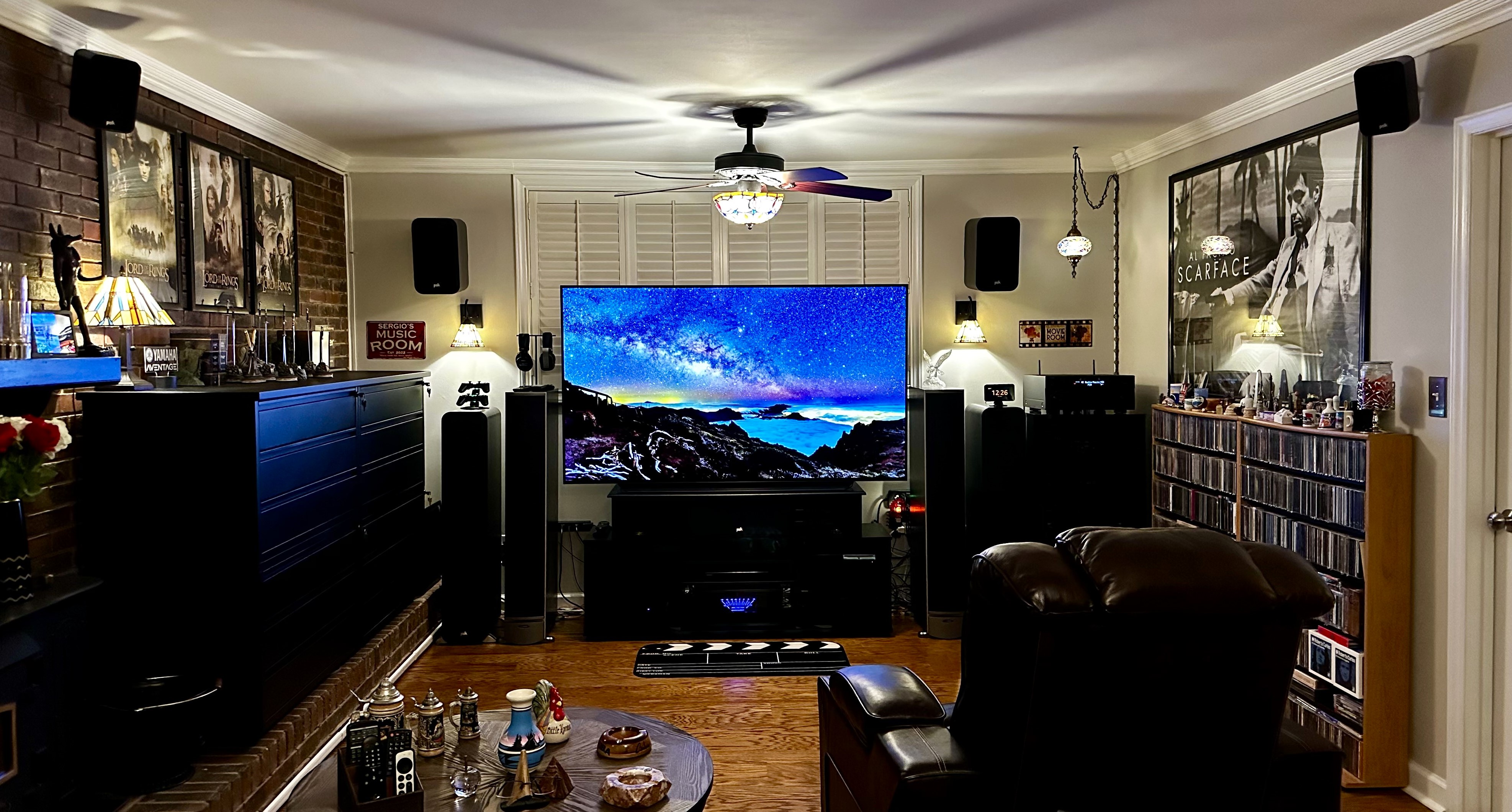Roger that!
Another version of a faux product? Like the circa '90s surround AVRs with no actual multichannel inputs that could only add reverb and put it in the surround channels?
Yeah, get out the speaker test recording! A 12 channel version now counting 1 - 12. (Needs a deep voice for ch 4.)
It would be interesting test for sure. To help clarify this here are the two scenarios I see:

The first scenario is one pair of heights and one pair of ceilings. There's a few ways that I can see this working.
Height = Atmos pair 1 (meaning it gets the same signal as the first set of Atmos speakers in the second scenario)
Height = Matrix of Atmos pair 1 and bed channels
Might be some other combinations I'm not thinking of. I said wides earlier, but the diagram wouldn't support them being treated like wides.
The second scenario is a typical 5.x.4 setup with an unconventional layout. Works like any other Atmos setup, but the processor would need to do some magic to deal with the spacing. The nice thing about this option is you don't have to guess how it's going to get treated by the current or future processors since 4 ceiling channels is the norm (for now at least).
















